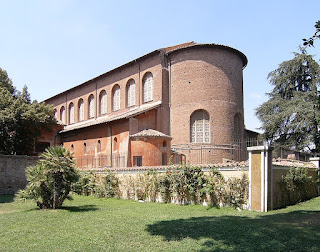Baritone who had 16 seasons at the New York Met
 |
| Anselmo Colzani in his signature role, Scarpia in Puccini's Tosca |
His stage career continued until 1980, when he made his final stage appearance in one of his signature roles as Scarpia in Giacomo Puccini’s Tosca.
Although his repertoire was much wider, his reputation became strongly associated with the works of Puccini and Giuseppe Verdi, with Jack Rance in Puccini's Fanciulla del West and the title role of Verdi's Falstaff, as well a Amonasro in Aida and Iago in Otello among his most famous roles.
Colzani’s association with the Met began in March 1960 after he was approached by Rudolf Bing, the opera house’s general manager, following the sudden death of Leonard Warren onstage during a performance of La Forza del Destino.
A few weeks later, Colzani took over Warren's role in Verdi's Simon Boccanegra. It was not only the first time he had sung at the Met, but the first time he had sung the role, which he had to learn it in a matter of days.
Yet so impressive was he that he returned to the Met for the next 16 seasons, making 272 appearances either in New York or on tour. A measure of the stature he achieved there in a short space of time was that he was the baritone chosen for the title role in the first performance of Franco Zeffirelli’s acclaimed production of Falstaff in 1964, conducted by Leonard Bernstein.
 |
| Colzani with the soprano Renata Tebaldi, with whom he starred many times |
He made his debut at the Teatro Comunale in Bologna in 1947 in the small role of the Herald in Wagner's Lohengrin. Also in the cast and making her house debut was the soprano Renata Tebaldi, with whom he would later be reunited in New York.
Colzani made his bow at Teatro alla Scala in Milan, in 1952, as the murderous Alfio in Pietro Mascagni’s Cavalleria rusticana, and he continued to sing there until 1970, his last appearance being also as Alfio.
He was soon in demand throughout Italy for the dramatic baritone roles of Verdi in particular, becoming a major draw in Naples, Verona and in Rome, where he enjoyed several seasons at the Baths of Caracalla.
He made his United States debut at the San Francisco Opera in 1956, but it was at the Met that he established an enduring foothold, appearing there with many of the major stars of the day, including Maria Callas, Franco Corelli and Carlo Bergonzi.
Colzani's last Met performance was as Michonnet in Adriana Lecouvreur, by Francesco Cilea, in 1978. He continued singing until 1980, when he gave his final performance in Tosca, reprising the Scarpia role in which he most frequently appeared during his years at the Met.
Married twice - his first wife died young - Colzani died in 2006, a few days before what would have been his 88th birthday. He was survived by his second wife, Ada, and his two children, Bianca and Miriam.
 |
| One of the towers that formed part of Budrio's medieval |
Colzani’s home town, Budrio, is 15km (9 miles) east of Bologna. A former Roman settlement, it is notable for the remains of the four corner towers of a castle rebuilt in the 14th century, inside which the original village was contained. Each year, the town stages an international opera competition in Colzani’s memory.
Travel tip:
Bologna has a tradition of presenting opera that goes back to the early 17th century. The Teatro Comunale, where Colzani made his debut, came into being in 1763 as the Nuovo Teatro Pubblico, designed by Antonio Galli Bibiena, who won a competition to design a new theatre for the city after another one, Teatro Mavezzi, had been destroyed by fire. Arturo Toscanini, who went on to be musical director at La Scala, the Met and the New York Philharmonic, conducted there many times in the early part of his career.
More reading:
Why Renata Tebaldi was said to have the 'voice of an angel'
How Arturo Toscanini became a conductor by chance
Tito Gobbi - the baritone who enjoyed a movie career
Also on this day:
1472: The birth of the great Renaissance painter Fra Bartolommeo
1925: The birth of legendary film producer Alberto Grimaldi
Home








